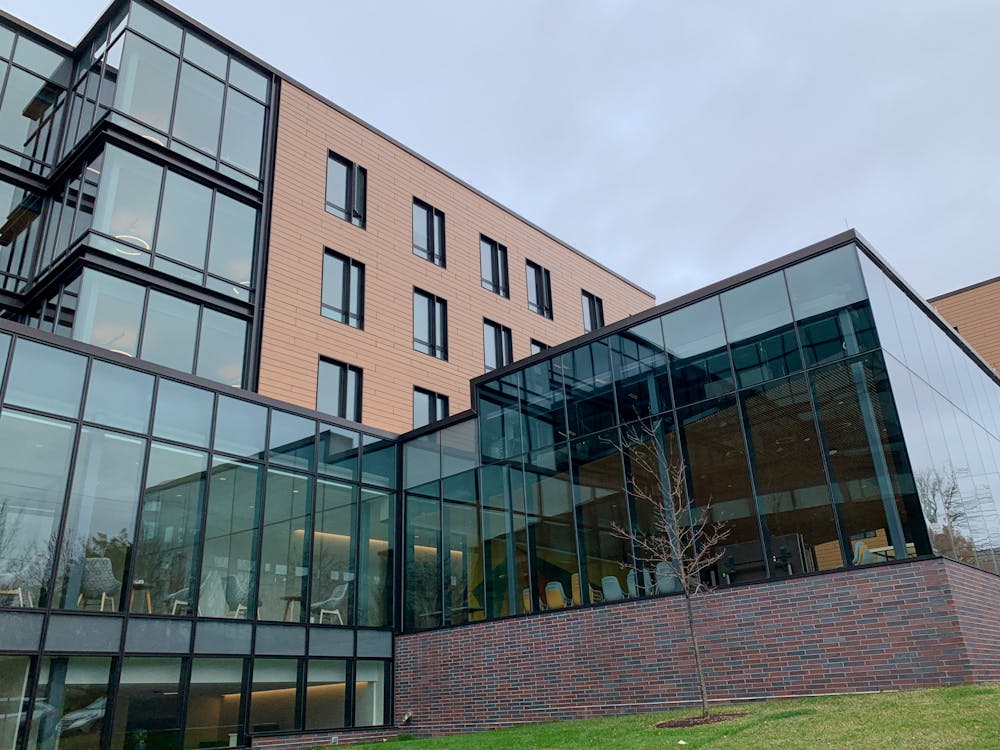This semester, the first cohort of students to complete a full academic year in the Wellness Center and Residence Hall will end their residence at 450 Brook Street.
Wellness, “an immersive living-learning experience in Brown’s new residence hall,” aims to provide “peer education, community building, collaboration, and outreach” to foster wellness on campus, according to the Wellness website. Many residents prefer the building’s design and facilities to other dorms on campus, The Herald previously reported.
According to Wellness Residential Peer Leader Jasmine Cardichon ’22, while some students take advantage of the resources that Wellness has to offer, other students are solely motivated to join because of the dorm’s facilities.
“There’s two types of people who live here,” Cardichon said. There are “those who do just come here (because) it’s a nice building but don’t partake in anything else. And then there’s those who did apply here with the intention of being a steward of the space.”
Cardichon noted that the combination of the new facilities and the programming are both important to residents’ overall wellness. “Even for those people that just come here (because) it’s a nice space … it being a nice space still helps in some way,” she said. “I do think it’s the fact that the (programming and space) are intertwined.”
According to an email to The Herald from BWell Health Promotions Director Tanya Purdy, the BWell office expects “that even if someone applied to live in the building for the sole purpose of its condition, that they would still participate in and benefit from the efforts of the wellness community.”
This year, students in Wellness were able to participate in 33 wellness-related programs, including a walking club, journaling night and an open dance studio, Purdy noted.
Current resident Lila Zimbalist ’23 said that while many of these offerings for Wellness residents have been helpful, they are difficult to share with the larger Brown residential community.
But, according to Purdy, BWell has additional wellness programming available to community members outside of Wellness as well. “We have many University partners we collaborate with to make wellness programming accessible and available throughout campus,” she wrote.
Still, according to current resident Chloe Rosenkranz ’23, there is little accountability for Wellness residents to attend programming in the building.
“There are events here every so often,” she said. “But I don’t really think that there’s anything keeping anyone accountable to doing the things they said that they would do. When there’s nothing making you show up (to these events), you probably won’t show up.”
“Last semester, they brought over one of the instructors from the Nelson … and they had two free (fitness) classes a week,” she said. “I was the only person that showed up to it every week, so then they canceled it.”
This year, over 1,600 students applied to Wellness, Purdy noted. Students were selected by University graduate and medical students hired by the Office of Residential Life and BWell.
Rosenkranz suggested that the popularity of Wellness comes from the quality of the building itself rather than its programming.
“If they had this program in any other building, I don’t think it would be as popular,” Rosenkranz said. “It really is because of the building. If it were held in any other dorm that wasn't as nice I don't think you’d have as many people apply.”
Some students questioned the effectiveness of the Wellness application.
The application “definitely has leading questions in regards to it asking you about your wellness practices,” said current resident Laura Xu ’23. “There’s definitely room for embellishment in your answers.”
While Zimbalist noted that the Wellness application encourages students to share what they learn in the program with other residential communities, she “hasn’t really seen that happening.”
“There’s a lot of good perks,” Zimbalist said. “During finals week in the fall, they dropped off wellness care packages. For the people living (in Wellness), they do a good job of having events.” But these offerings are confined to the dorm, she added.
“It’s really nice to have access to these resources and activities,” Xu added. “But I do feel like since Wellness is geographically really far from everything else on campus, it’s probably hard for the rest of the student population to access those resources.”
“It does feel very targeted toward a very small population,” she said.

Neil Mehta was the editor-in-chief and president of the Brown Daily Herald's 134th editorial board. They study public health and statistics at Brown. Outside the office, you can find Neil baking and playing Tetris.





